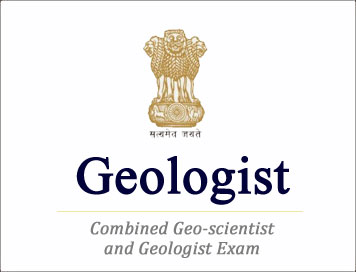(HOT) UPSC Current Affairs 2025 PDF
NEW! The Gist (OCT-2025) | E-BOOKS
UPSC Geo-Scientist and Geologist Exam Papers 2018 : Hydrogeology

(Download) UPSC: Geologist Examination Papers-2018
Exam Name : UPSC Geo-Scientist and Geologist Exam 2018
Subject : Hydrogeology
Year : 2018
HYDROGEOLOGY
Time Allowed : Three Hours
Maximum Marks : 200
QUESTION PAPER SPECIFIC INSTRUCTIONS
Please read each of the following instructions carefully before attempting questions.
There are NINE questions divided under FIVE Sections.
Candidate has to attempt FIVE questions in all.
The ONLY question in Section A is compulsory.
Out of the remaining EIGHT questions, the candidate has to attempt FOUR, choosing ONE from each of the other Sections B, C, D, E and F.
The number of marks carried by a question/part is indicated against it.
Symbols, abbreviations and notations have their usual standard meanings.
Neat sketches are to be drawn to illustrate answers, wherever required. Wherever required, graphs/tables are to be drawn on the QCA Booklet itself.
Attempts of questions shall be counted in sequential order. Unless struck off, attempt of a question shall be counted even if attempted partly.
Any page or portion of the page left blank in the Booklet must be clearly struck off.
Answers must be written in ENGLISH only.
SECTION-A
(Compulsory Section)
Q1. Write notes on the following in not more than 5 sentences each :
(a) Transmissivity of Aquifers
(b) Vadose Zone
(c) Spatial Resolution in Remote Sensing
(d) Piezometer
(e) Reynolds Number
(f) Cone of Depression
(g) GRACE Satellite Data-finding for Groundwater Status
(h) Check Dams
SECTION B (Attempt any one question)
Q2. (a) Describe the role of vadose zone in water balance equation.
(b) What are aquifers ? Explain the different types of aquifers and their
characteristics with suitable diagrams.
(c) Describe the salient features of different groundwater provinces of
India. 15
Q3. (a) Define the origin of Sambhar Lake and its relation with
surrounding aquifers.
(b) How are the groundwater levels affected by tides and weather
fluctuation ?
(c) Classify the rocks based on their water-bearing properties.
SECTION C (Attempt any one question)
Q4. (a) The water table elevations (in m above mean sea level)
measured from observation wells of an area are shown in Map 1. After drawing the
water table contours, discuss about the groundwater flow directions and
significances.
(b) Define hydraulic conductivity. Explain the field methods of
determining the hydraulic conductivity of aquifer media.
(c) What is meant by Porosity ? Explain the types of porosities
encountered in various rock types. Add a note on the two aquifer properties
involved in porosity.
Q5. (a) Explain the factors controlling groundwater flow. Highlight
the types of flows encountered in different kinds of aquifers.
(b) Pumping tests were conducted in a set
of four wells designated as A, B, C and D, with a pumping rate of 100
cu.m./day, in each well. The semi-log plot of drawdown versus time has shown the
following drawdown-per-log cycle (As) values as output :
| Well | A | B | C | D |
| Ds | 0.25 | 0.75 | 0.50 | 0.15 |
After calculating the aquifer transmissivities using Jacob's straight line
equation, compare the nature of aquifers in these wells. Find out the best
performing well.
(c) What are groundwater models ? Give an account on the protocols of
groundwater models, available for water resources evaluation.
SECTION D (Attempt any one question)
Q6. (a) What are the elements of interpretation adopted in Satellite
Images ? Give an account on the role of Remote Sensing in groundwater
exploration.
(b) Write notes on the following:
(i) Principles of Seismic Refraction Method
(ii) Bouguer Anomalies
(iii) Proton Precession Magnetometer
(c) What are the basic principles involved in Electrical Resistivity Method ? Give an account on the types of surface electrical resistivity methods employed in groundwater exploration.
Q7. (a) What are water wells ? Give an account on the methods adopted
into design, development and maintenance of various types of tube wells.
(b) Explain the water well drilling methods employed in the groundwater
exploration of hard rock terrains.
(c) What are the basic principles involved in well logging ? Give an
account on the methods of subsurface geophysical logging employed for
hydrogeological interpretations.
SECTION E (Attempt any one question)
Q8. (a) How do the following parameters affect the use of groundwater ?
(i) Hardness
(ii) pH
(iii) EC
(iv) SAR
(v) Fluoride
(b) Name various graphical representation techniques of groundwater
hydrochemical data. Explain the one which is used for the classification of
groundwater into various facies.
(c) What is Radon ? Explain its implications in hydrogeology.
Q9. (a) Discuss the major challenges in implementation of groundwater
related regulatory measures in India.
(b) Explain the following pertaining to the groundwater management :
(i) Supply side measures
(ii) Demand side measures
(c) Calculate the total annual rainfall runoff available from a roof top area of 2080 sq.m. with surface runoff coefficient 0.8 and average annual rainfall of 600 mm.
Click Here to Download PDF
<< Go Back To Main Page
Courtesy: UPSC

